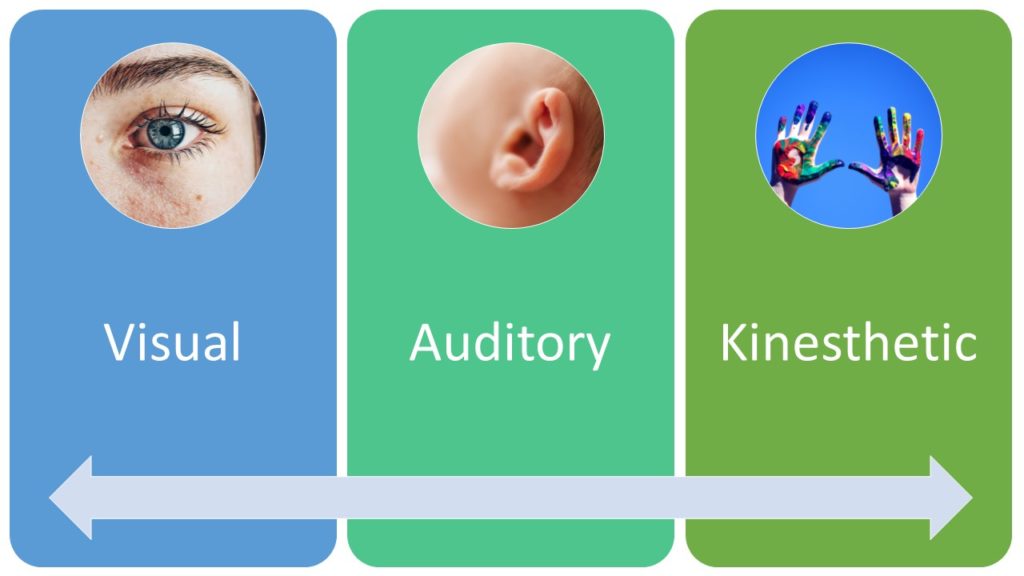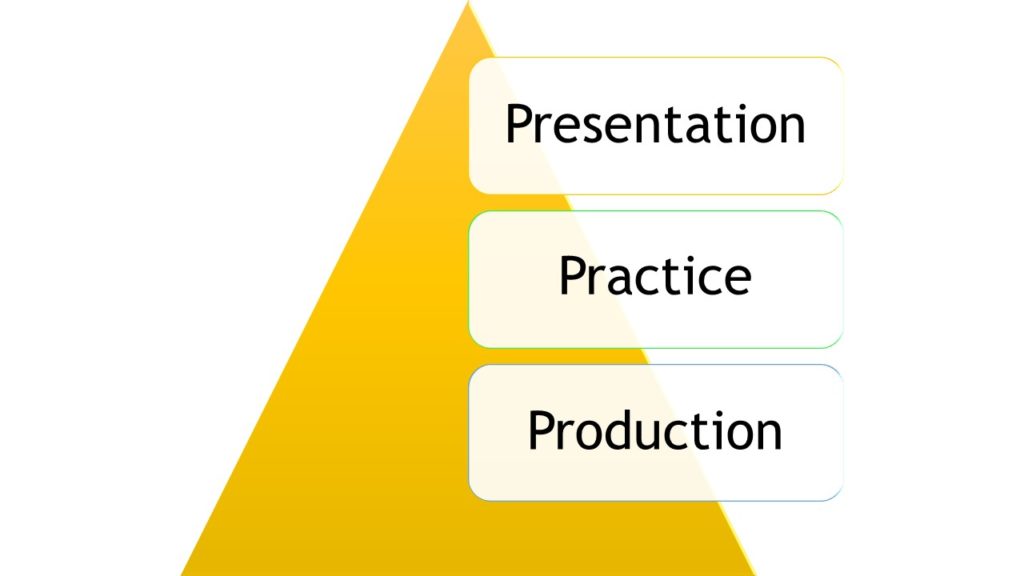How do you Learn a language?
Language Learning Styles – Common Beliefs
One of the most commonly believed theories of language learning styles is VAK (visual, auditory or kinaesthetic)*. This refers to a learner’s preference for how she/he interacts with language. Although this is often referred to on teacher training courses, there has been research by Willingham, Hughes and Dobolyi, that refute these and other learner style theories. They conclude that scientific support for the established learning theories is lacking and that educators’ time and energy are better spent on other theories that might aid instruction.

One example of the adverse influence of VAK is, in my experience, language learners and often language teachers in teacher training, insist that they are ‘visual learners’ and need to see the word before they can learn to speak it. Mostly, this has been vaguely learned in some previous course or developed by here-say. I usually ask them how this would apply to a person that speaks one of the main European languages like Spanish or French learning Japanese or Arabic (consider the writing). Although I would not go as far as to refute that people have different styles of learning, I would question the relevance of this to effective language learning and teaching especially at the beginner stage. As I argue in my previous blog, learning a language should begin with learning to speak it.
So, bearing this in mind, how do we help learners to learn a language at inlingua then?
*For other common learning styles theories see further reading.
How the inlingua Method Works
The Three ‘P’s

The process of the three ‘P’s: Presentation, Practice and Production, is a well-tried-and- tested approach to language teaching. The exact origins are unclear, but it has been established as a language teaching practice since around the middle of the 20th century. When the current inlingua method is applied to the three ‘P’s, however, it can look quite different to practices at other language schools.
Presentation
Traditionally, in inlingua classrooms, the presentation of the language has been almost exclusively by speaking. That does not mean that pictures and videos or listening activities were not used, but rather that the emphasis was in getting the learner to speak the language using modelling and repetition. The target language was ‘elicited’ from the learners as a first attempt at introducing the language, if this was not successful, the language was ‘fed’ by the trainer. Once correct pronunciation was achieved, the trainer would go on to practicing the language in class. The written form was introduced mostly through the coursebook or workbook (now e-books). This was done in the learner’s self-study time to maximise the learners’ talking time in class.
More recently, language has also been presented in written or recorded form. This has been integrated to facilitate practicing the skills of reading and listening. The main target language is still introduced through speaking, but some target items are reserved so the learner can practice understanding the language in context in the written form or by listening to a recorded example. This additional target language is always activated by speaking activities afterwards. This helps language retention as discussed in the first blog in this series.
Practice
Again traditionally, practice of the target language was done in class using a trainer-led, questions and answers drill with variations.
In our current publications, reading and listening for general understanding, specific information and detail, have been added to the practice stage to enhance learning of these micro-skills. The target language learned in reading and listening are nevertheless activated by speaking practice. In addition to the traditional inlingua speaking drills, trainer-led discussions for controlled and semi-controlled practice have been added.
Production
Written production can also be practiced in class when required, but generally the production stage focuses on fluency of speaking. This is practiced by groupwork or pairwork monitored by the trainer.
Virtual Classrooms
I would like to mention here that the above techniques also work perfectly in the virtual classroom environment. Breakout rooms are required for pair work with four or more learners, but essentially everything else is the same. More details will be given about Virtual classroom lessons in a later post in this series.
The fourth P?
So, what is the fourth P? This is the post production or consolidation stage. After the language of a specific topic has been introduced, practiced and a level of fluency achieved through the three ‘P’s, the learner is encouraged to continue using and exploring the language in a self-study capacity.
Here inlingua has excelled with our exclusive online learning platform my.lab with thousands of supporting exercises in the common European languages, including video and writing exercises of all descriptions. These are available for general language learning as well as more specifically for business language learners. my.lab can be used as part of our blended learning program: inlingua Plus, or simply as an add-on to classroom or VC training sessions. We also have online conversation classes that offer extra fluency practice.
Why the inlingua Method Works
At inlingua, our language learning material and method are focused on helping learners to learn a language principally through speaking. Although language is introduced in inlingua material though the exploration of various contemporary topics, a grammatical progression has been integrated such that grammar is learned systematically as the learner progresses. Grammar is introduced by example rather than explained using linguistic terminology such as ‘The Third Conditional’ or the ‘Past Perfect Continuous’.
This is discussed further in my next post.
Reading, listening and writing skills are developed alongside speaking in an integrated syllabus designed for rapid but linguistically rich acquisition. The inlingua language learning process extends well beyond the classroom or virtual classroom, to encourage autonomy in language use.
Supported self-study will help you consolidate the language as you progress towards fluency. With over 50 years of proven international success behind us, you have access to the optimum learning environment in the live or VC classroom and a wealth of carefully designed, on-line language learning material at your fingertips. More information, click here.
Further Reading
Studies on Learning Styles
- One of the most used theories of learning styles was developed by Kolb.
- Honey and Mumford created a different version of Kolb’s original work as applied to managers.
- Research by Grasha and Riechmann identifies learning styles as applied to adults: undergraduate and above. Other models have been presented notably by Dunn, Dunn, and Price, Riding and Rayner and Allinson and Hayes. Cassidy gives an overview and comparison.
- Here is a further in-depth discussion from the perspective of educational psychology
Studies Refuting the Common Beliefs
- Concerning language learning, however, it is more common to focus on learning styles as ‘(a) differential preferences for processing certain types of information or (b) for processing information in certain ways, and not how personality dimensions impact learning.’ Research by Willingham, Hughes and Dobolyi sheds light on this aspect of learning.
The Three Ps
- Read more about the three P’s here . Watch a video of pros and cons of the three P’s by Scott Thornbury. For a more academic discussion click here.
Bonus: Find an inlingua center near you!
*Next on this blog: Grammar versus Lexis – why the inlingua method works better than other methods/methods compared.
Peter Lambie, Method and Materials Consultant, inlingua International.